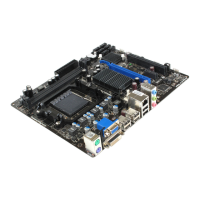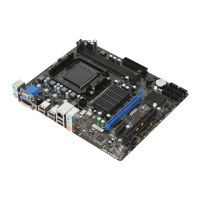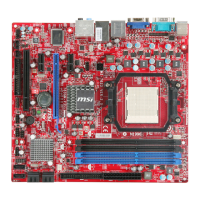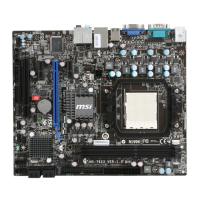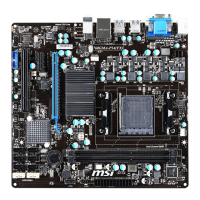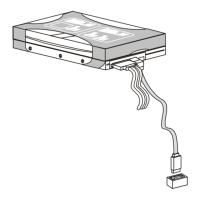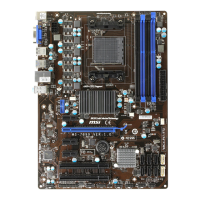
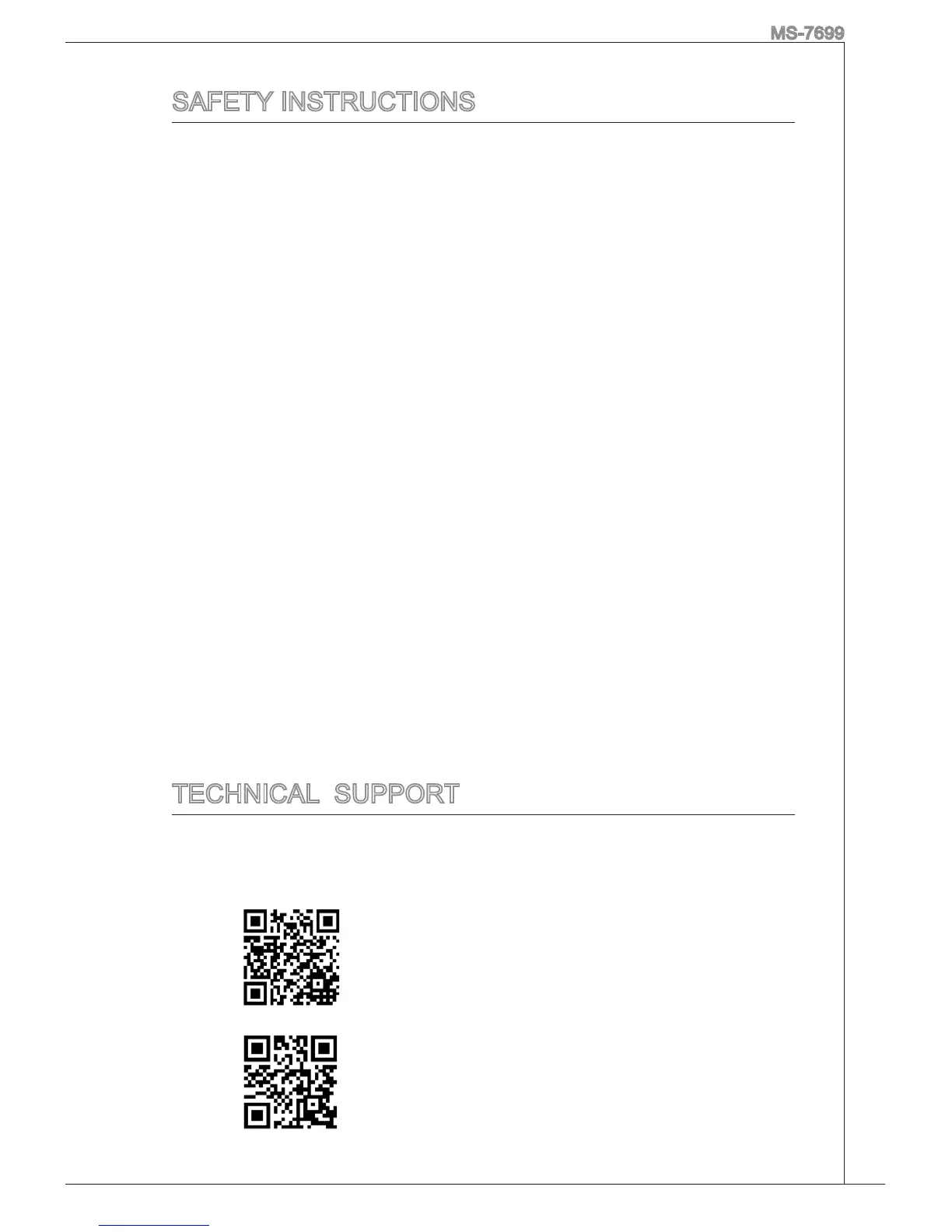 Loading...
Loading...
Do you have a question about the MSI 760GA-P43 and is the answer not in the manual?
| Socket | AM3 |
|---|---|
| Chipset | AMD 760G |
| Form Factor | ATX |
| Memory Slots | 4 |
| Max Memory | 16GB |
| PCI Express x1 Slots | 2 |
| PCIe 2.0 x1 Slots | 2 |
| SATA Ports | 6 |
| USB 2.0 Ports | 8 |
| Audio Chipset | Realtek ALC887 |
| LAN | Realtek RTL8111E |
Lists conditions requiring professional check, like damaged cords or equipment failure.
Covers humidity, flat surface, air convection, and storage temperature limits.
Provides website links for technical guides, BIOS, drivers, and contact information.
Outlines measures to correct interference and compliance notices regarding modifications and cable usage.
Provides disposal guidelines for different regions and a caution for battery replacement.
Informs about compliance with REACH regulations and provides a link to MSI's chemical substance information.
Explains the EU's WEEE Directive regarding disposal and return of electronic equipment.
Provides a diagram illustrating the layout of connectors and components on the mainboard.
Details supported CPUs, chipsets, memory types, speeds, and capacity.
Lists LAN controller, audio codec, SATA port specifications, and RAID support.
Covers USB 3.0 ports and rear panel connectivity options.
Describes internal connectors and expansion slots like PCIe and PCI.
Specifies the mainboard's physical dimensions and mounting hole configuration.
Provides URLs for obtaining additional product support and compatibility information.
Illustrates and labels all connectors found on the mainboard's rear panel.
Provides step-by-step instructions and important notes for installing the CPU and cooler.
Guides on installing the mainboard into the computer case, including I/O backplate and screw hole alignment.
Detailed instructions on how to properly install memory modules into the DIMM slots.
Explains ATX power connectors and system fan connectors.
Details Serial ATA connectors and the serial port connector.
Describes connectors for front panel switches and LEDs (JFP1, JFP2).
Explains USB 2.0/3.0 expansion and front panel audio connectors.
Covers TPM, chassis intrusion, and parallel port connectors.
Explains jumpers for clearing CMOS and configuring USB power modes.
Describes PCIe/PCI slots and PCI interrupt request routing.
Instructions on entering BIOS and overview of the menu bar and navigation keys.
Describes basic system configuration and advanced feature setup menus.
Details settings for integrated peripherals, power management, hardware monitoring, and BIOS password.
Covers advanced features like Cell Menu, M-Flash, overclocking, and loading BIOS defaults.
Instructions for saving changes and exiting the BIOS setup utility.
Displays CPU frequencies and lists supported CPU technologies like Cool'n'Quiet and SVM.
Covers adjusting CPU FSB frequency and configuring step-by-step overclocking parameters.
Allows adjustment of CPU clock multiplier and AMD Turbo Core Technology settings.
Options for CPU core control, unlocking cores, and advanced DRAM timing settings.
Explains automatic overclocking and memory information tools.
Covers Hyper-Transport link settings and voltage adjustments.
Discusses Spread Spectrum feature for EMI reduction and its impact on stability.
Explains how to load factory default values for stable performance.
Lists components and their compliance status regarding hazardous substances according to Chinese regulations.
